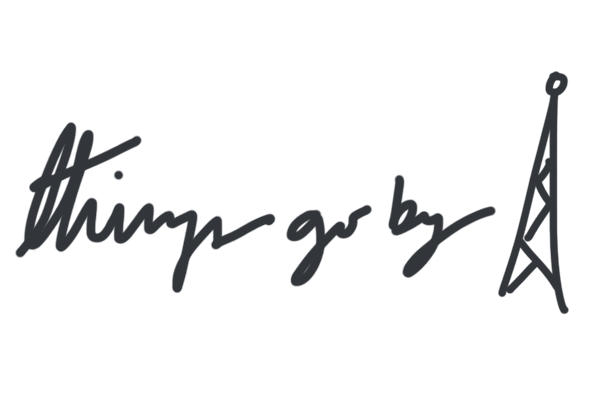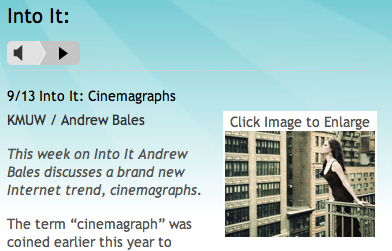The term “cinemagraph” was coined earlier this year by photographers Jamie Beck and Kevin Burg to describe what are essentially more artful versions of the common animated .gif. The file format dates back to 1987, but in recent months the .gif has been used to present these cinemagraphs, flooding blogs and forums and further bridging the gap between film and photography.
While old-fashioned animated .gif’s are sequential images looped to create a choppy video, cinemagraphs are a little more complex (I’ll link to some tutorials at the end of this post). To make them, a video clip is broken into its many component frames and one is selected. Then, with the help of a technique called masking, a small section of that image is allowed to continue to move.
What’s created is a photograph that sways. A model’s hair blows in the wind while her face remains perfectly lit. An escalator revolves as shoppers stand static beside it. Two men talk in the background, while in the foreground a blurry pedestrian is frozen in time.
The cinemagraphs in this post were created by Jamie Beck and Kevin Burg, the NYC-based artists who coined the term and are key proponents of the form. Much of their work is fashion photography, but they also have a collection of cityscapes in motion and even some promotional material for the microbrew Dogfish Head.
As you can see in these two images, the key to an engaging cinemagraph is subtlety. If the image is too congested with movement, it comes across as a shoddy rendition of a film. A seamless loop is also crucial, but easier said than done. For every captivating cinemagraph, there’s another that skips like a failing digitally video.
But there are more conceptual matters surrounding the cinemagraph. In Elizabeth Flock’s Washington Post article, Jamie Beck points out that in seeking out subject matter for cinemagraphs, changes in perspective are inevitable. “I just had to start training my eye. I had to start visualizing cinemagraphs.”
The duality of the cinemagraph can’t help but make me smile. Its at the same time a catchy form that elicits snap reactions from viewers and a subtle composition that takes patience and a keen eye to create. Cinemagraphs are theoretically simple enough to be added to the repertoire of the common blogger, but also have artistic merit to win over the art community and advertisers.
Cinemagraphs are interesting in how they blur the lines of many common media forms (video, photography, animated .gif’s, and even wigglegrams)— if we were making an evolutionary map of visual forms, this might be that missing link we’ve been digging for— but also in the simple fact that they’ve come to prominence at all. While cinemagraphs have the strengths of the various media forms, they also have weaknesses. Most notably, the .gifs are often slow to load and the sequence can be rather glitchy, even after they’ve properly loaded.
Despite these constraints, it’s not hard to see how these images stand out sites like Tumblr and Flickr, where half a second is often all the time that’s given to any particular post, and where innovation is rewarded with a repost.
If you’re anything like me, you’ll want to try your hand at cinemagraphs. A good place to start is Christopher Matthew Burt’s tutorial.
For more info, jump over to THEE BLOG and read their take.
For more from Jamie Beck and Kevin Burg, visit www.cinemagraphs.com
Listen to the original Into It audio. Just click the KMUW image:



